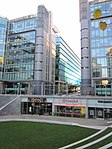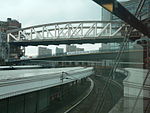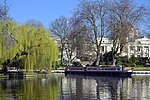Marylebone Boys' School
2014 establishments in EnglandAC with 0 elementsBoys' schools in LondonEducational institutions established in 2014Free schools in London ... and 1 more
Secondary schools in the City of Westminster
Marylebone Boys' School is a free school set up by parents, teachers and local people of Marylebone in Central London. It opened on Wednesday 3 September 2014 in temporary accommodation in Priory Park Road, London NW6 7UJ, but later moved to a permanent site in North Wharf Road, near Paddington Station.The secondary school is for boys aged 11 – 16 years, then there is a co-educational Sixth Form, 200 metres away for young adults aged 16 – 18 years.
Excerpt from the Wikipedia article Marylebone Boys' School (License: CC BY-SA 3.0, Authors).Marylebone Boys' School
Bishops Bridge Road, London Paddington
Geographical coordinates (GPS) Address Nearby Places Show on map
Geographical coordinates (GPS)
| Latitude | Longitude |
|---|---|
| N 51.5189366 ° | E -0.1774226 ° |
Address
Brunel Building
Bishops Bridge Road
W2 1DG London, Paddington
England, United Kingdom
Open on Google Maps











